site search
online catalog
AMERICAN RESTOCKED FRENCH 1733 PISTOL
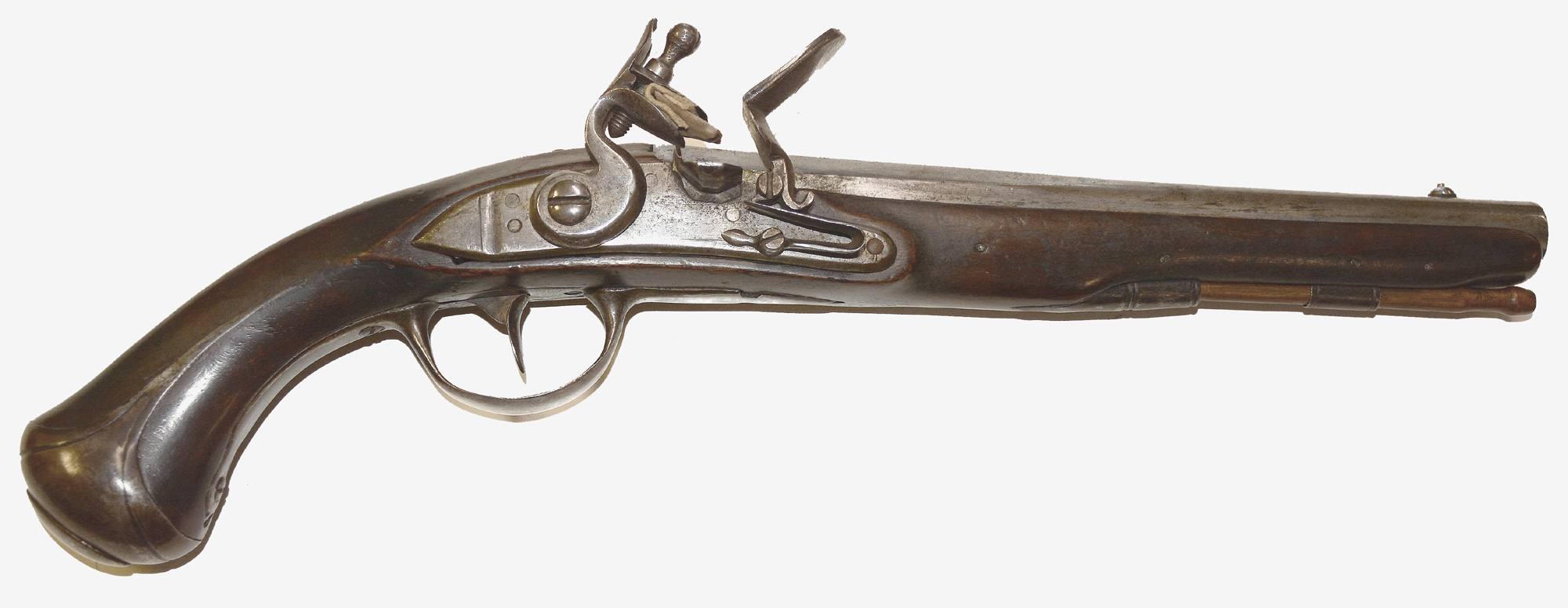
Hover to zoom

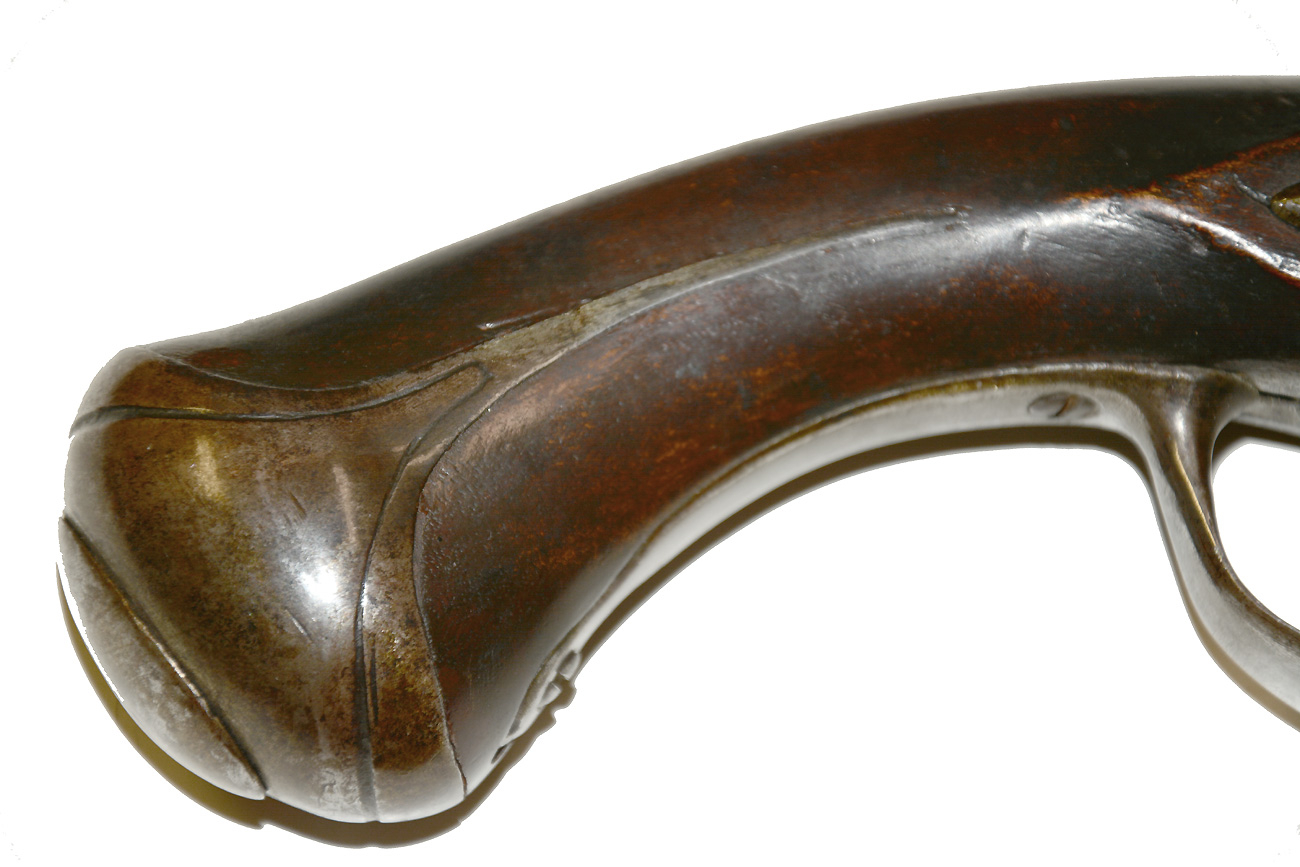
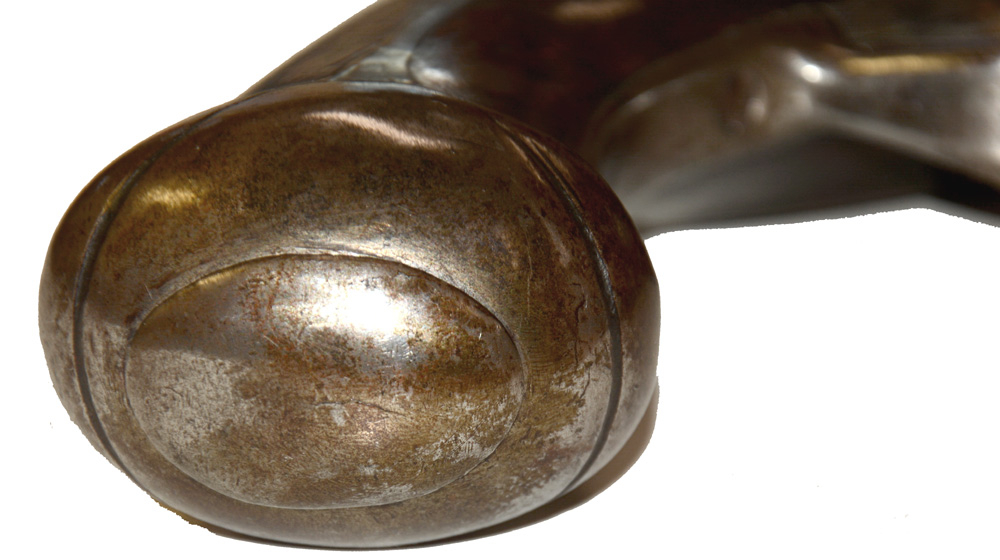
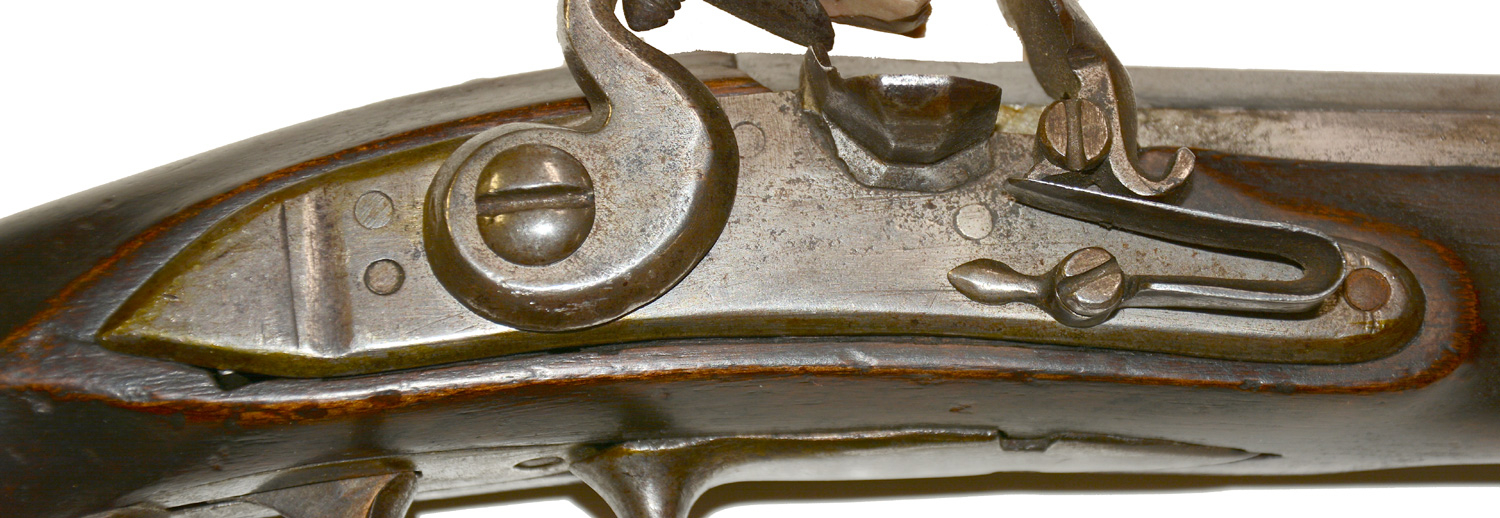
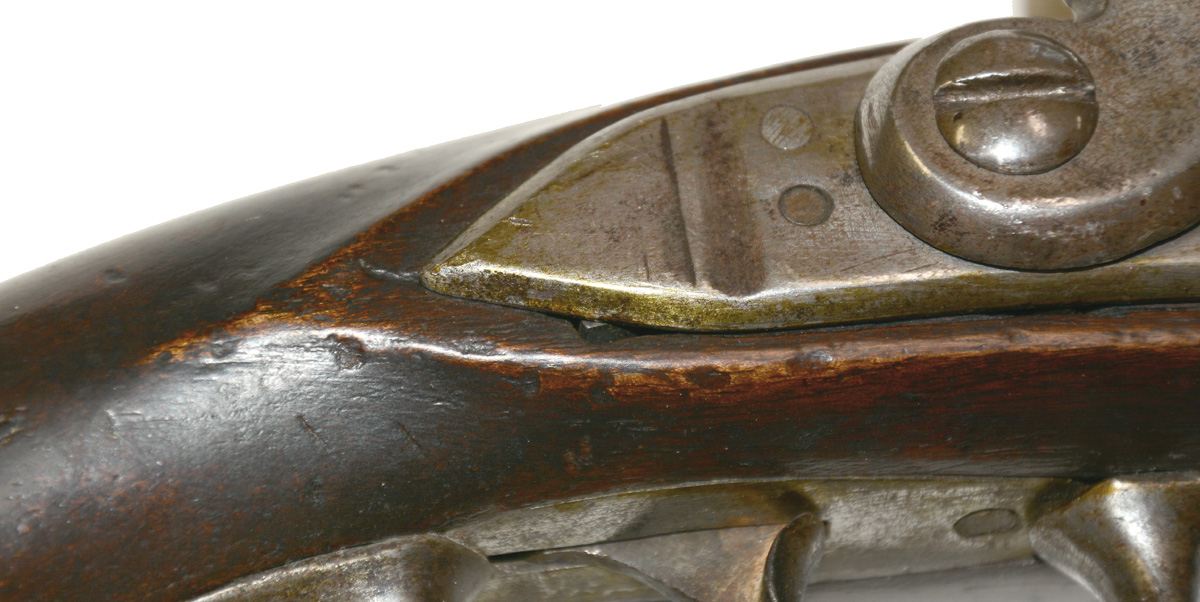
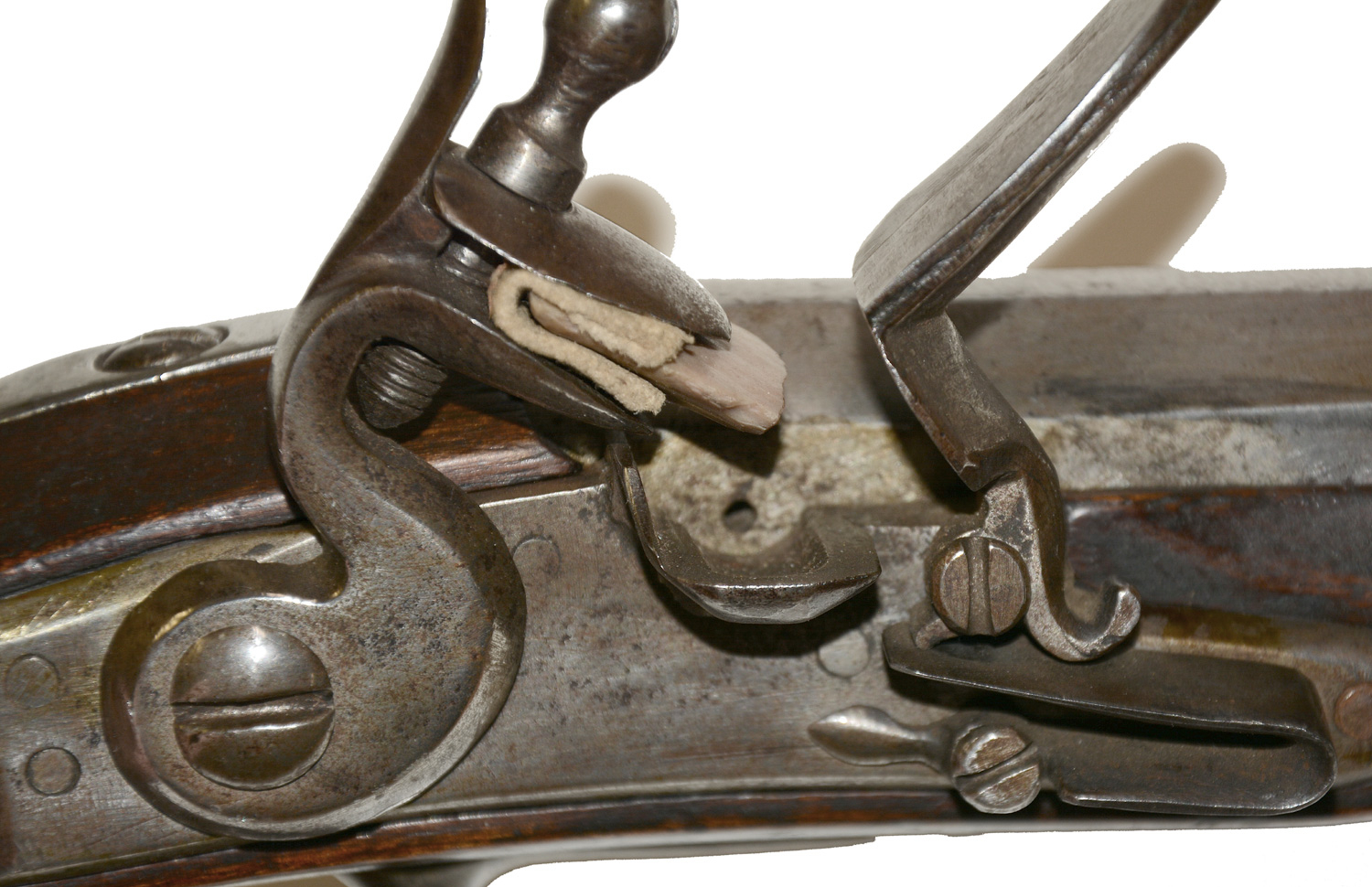
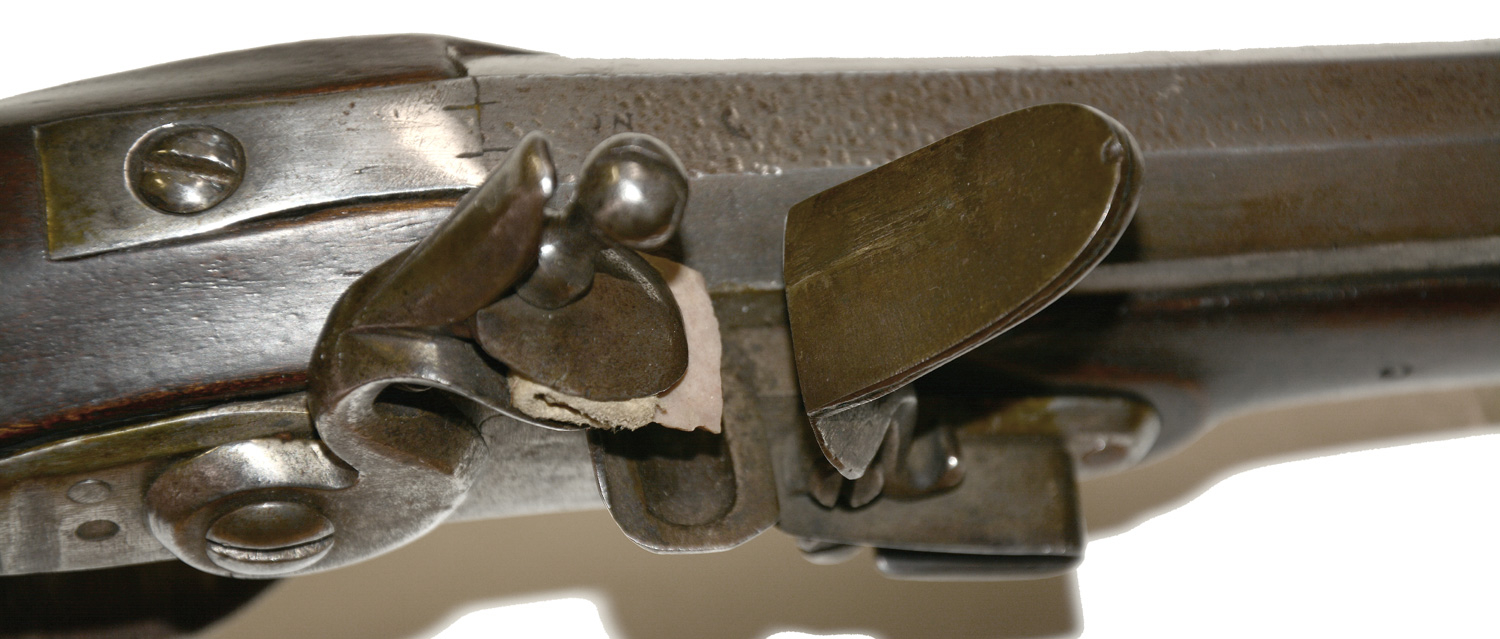


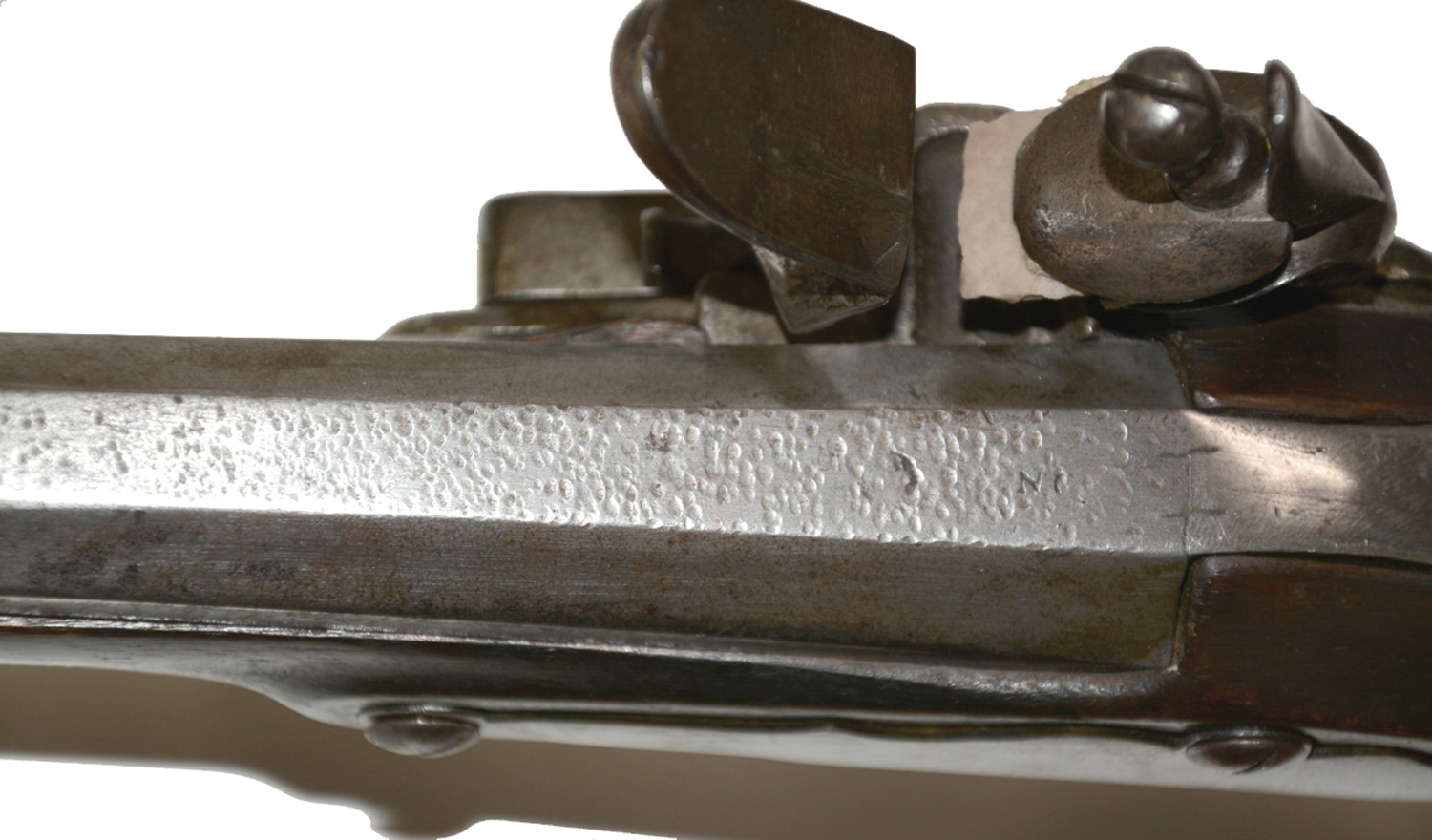
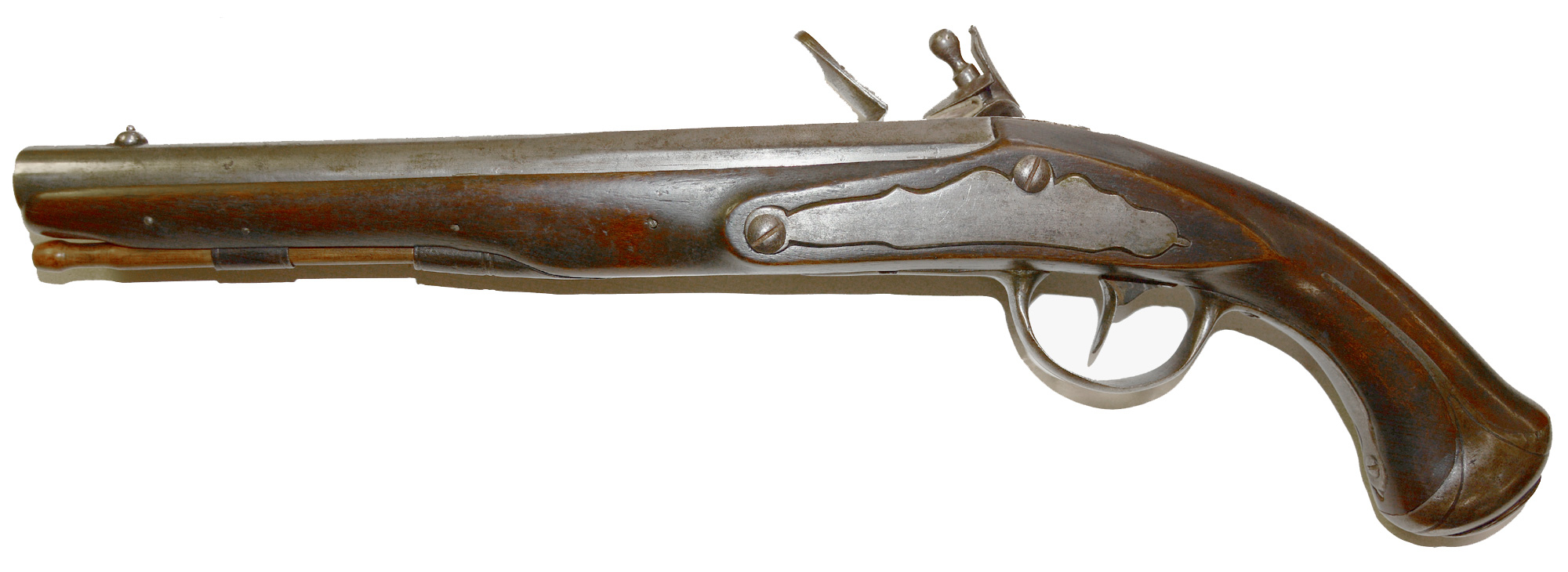
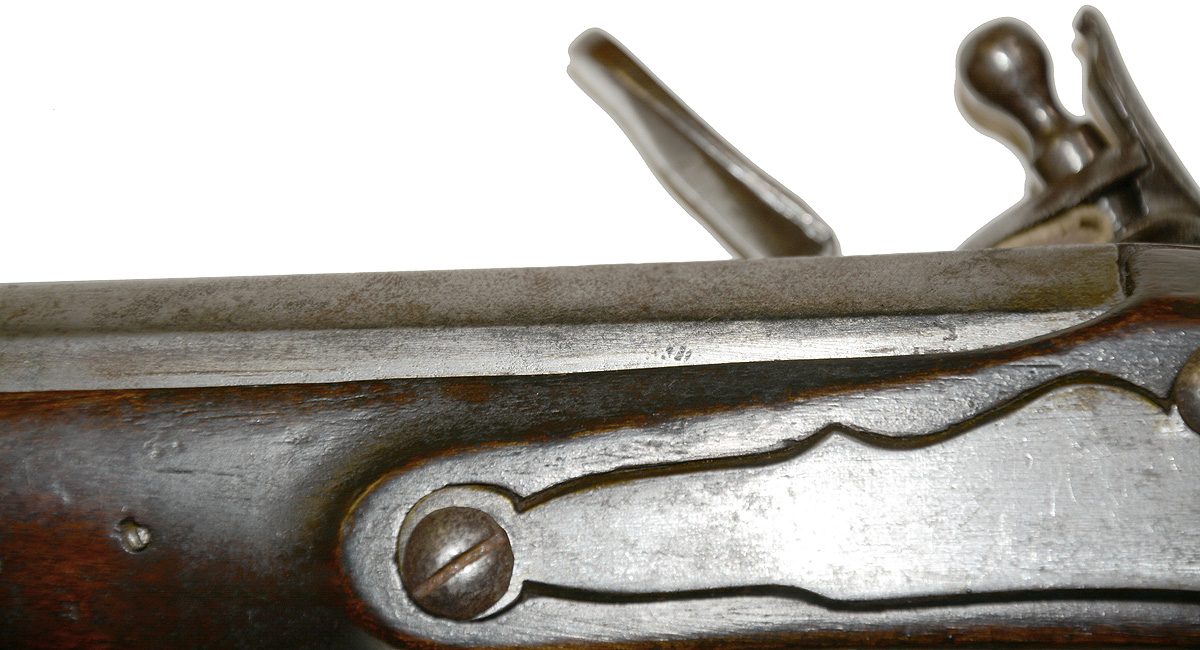
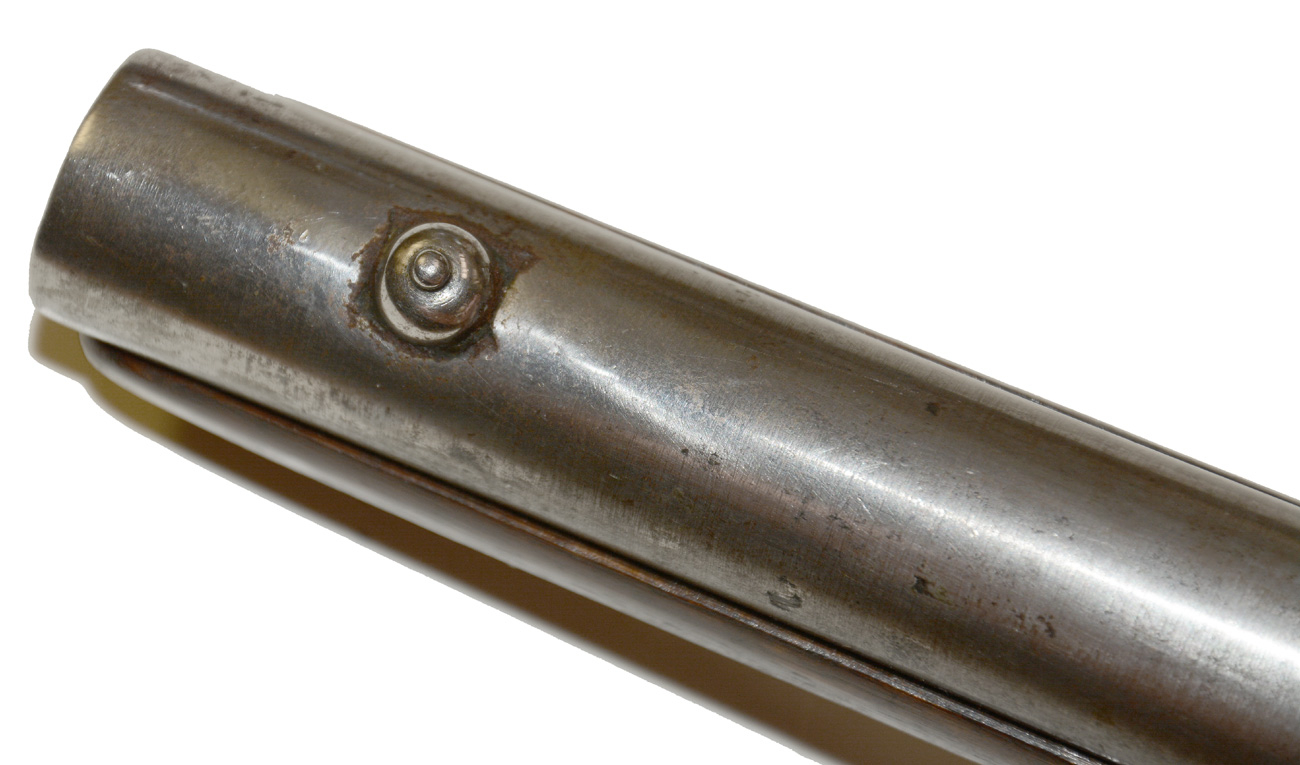
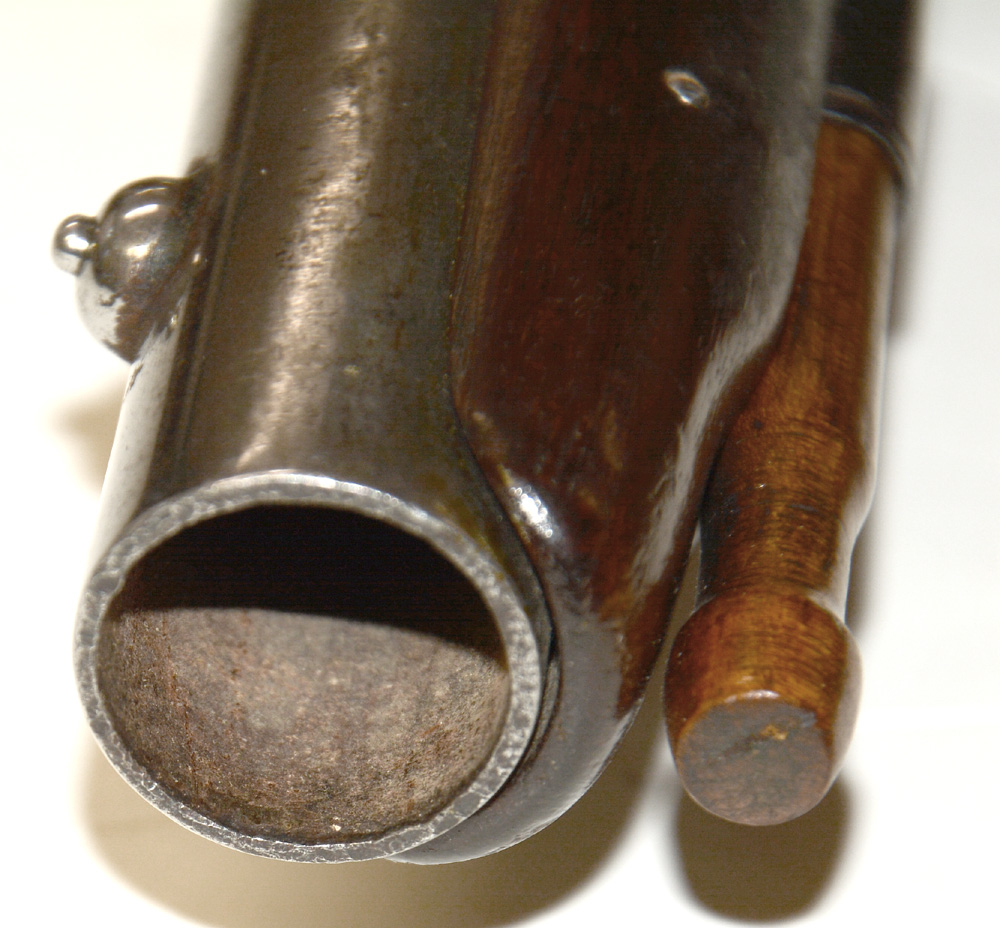
$2,650.00 SOLD
Quantity Available: None
Item Code: 401-43
This pistol seems to be stocked in birch rather than walnut, making it a candidate as a pistol restocked in America or assembled from the many parts imported here during the Revolution. In overall form the pistol follows the French 1733 pattern, the first standardized pistol adopted in the French army and used in the navy as well. This one is iron mounted, indicating a naval origin: brass was apparently used by the army and both brass and iron by the navy. (See Neumann, Battle Weapons, 21.PP, for an example of the cavalry version.)
The naval association of this pistol could also indicate it came into American hands as early as the French and Indian War. Chartrand notes that although they were intended for use by sailors on board ships, “royal arms magazines in all colonies always had a stock of pistols and they might be used for other purposes than naval operations.” (Fr. Mil. Arms and Armor in Am., 141.) Supporting the navy connection is a partial barrel marking at breech that seems to read “ON,” possibly a remnant of “TOULON,” a illustrated by Chartrand on p.140. The octagonal-to-round configuration of the barrel, with a slightly swamped muzzle, matches the 1733 configuration. It measures 11 inches rather than 12, but various contractors produced the pistol for the navy and Gilkerson (BA, Vol. 2, 240) records the same barrel length on an iron-mounted 1733 pistol by Dumares, a naval supplier in Toulon.
There wood has nice color and finish, with good edges to the lock apron and side flat. It omits any decorative carving and does not have a reinforcing band near the nose of the stock. The side plate and triggerguard are imprecisely fitted, with a gap between wood and metal. The side plate is the correct elongated flat triangle secured by two screws, but has decorative wavy edges. Even so, it omits any engraving and is likely a maker variation. The triggerguard bow is beveled. The triggerguard forward tang, however, is a simply rendered abstract version of the acorn or flowered finial, looking instead like an arrowhead or pine tree.
Both buttcap and lock, however, are very tightly fitted to the wood. The butt is the standard French 1733 form with flared pommel. The stepped pommel cap with long side spurs follows the standard pattern and has a narrow incised border line that extends a short distance along the spur before coming to a point. The lock has pitting and shows only the hint of a letter or two, but has the vertical groove and two screws at rear of the French 1733 lock. The pan is rounded and lacks an external bridle: perhaps indicating an early date, but more likely an acceptable a naval maker variation.) The lock is tightly inlet and the apron shows good edges, with just a small chip at bottom rear, probably from a sear spring.
The metal is generally smooth forward, with bright metal and gray spotting, but with shallow pitting on the top flat at rear and around the touch hole. The single iron rammer thimble and rear entry pipe are in place. The rammer is certainly a replacement. The front sight was also replaced at some point, likely by a well-meaning collector, but uses the rounded base and pin top seen on much later French pistols. The triggerguard has a museum or collection inventory number painted or inked on. We have left it, but it could easily be removed.
This is an interesting pistol that may well have seen Revolutionary War use not only American privateer or even navy vessels, but in the saddle holsters of light dragoons or mounted militia by way of earlier capture or wartime gift from France. The French army began replacing the 1733 with the 1763 and 1766 pistols. The navy may have waited until the 1777 pisolet de bord. In either case, French arms shipments largely included older pattern arms and parts they were happy to get rid of and we were happy to receive. [sr][ph:L]
DISCLAIMER: All firearms are sold as collector's items only - we do not accept responsibility as to the shooting safety or reliability of any antique firearm. All firearms are described as accurately as possible, given the restraints of a catalog listing length. We want satisfied customers & often "under" describe the weapons. Any city or state regulations regarding owning antique firearms are the responsibility of the purchaser. All firearms are "mechanically perfect" unless noted, but again, are NOT warranted as safe to fire.
~~~~~~~~~~~~~~~~~~~~~~~~~~~~~~~~~~~
THIS ITEM, AS WITH ALL OTHER ITEMS AVAILABLE ON OUR WEB SITE,
MAY BE PURCHASED THROUGH OUR LAYAWAY PROGRAM.
CLICK HERE FOR OUR POLICIES AND TERMS.
THANK YOU!
Inquire About AMERICAN RESTOCKED FRENCH 1733 PISTOL
Most Popular
Historical Firearms Stolen From The National Civil War Museum In Harrisburg, Pa »
Theft From Gravesite Of Gen. John Reynolds »
Selection Of Unframed Prints By Don Troiani »
Fine Condition Brass Infantry Bugle Insignia »
featured item
RARE 1/6 PLATE AMBROTYPE – LT. JOHN WHITEHEAD, 53rd VA, WIA AND CAPTURED DURING PICKETT’S CHARGE – EX-COCO COLLECTION
The 53rd Virginia Infantry Regiment participated in the Battle of Gettysburg as part of General Armistead's Brigade and played a famous role in Pickett's Charge on July 3, 1863, with some men advancing to the stone wall along the Angle before being… (1300-74). Learn More »
site search
Upcoming Events
The shop is currently closed so that we may conduct our annual inventory. We are available by phone… Learn More »


